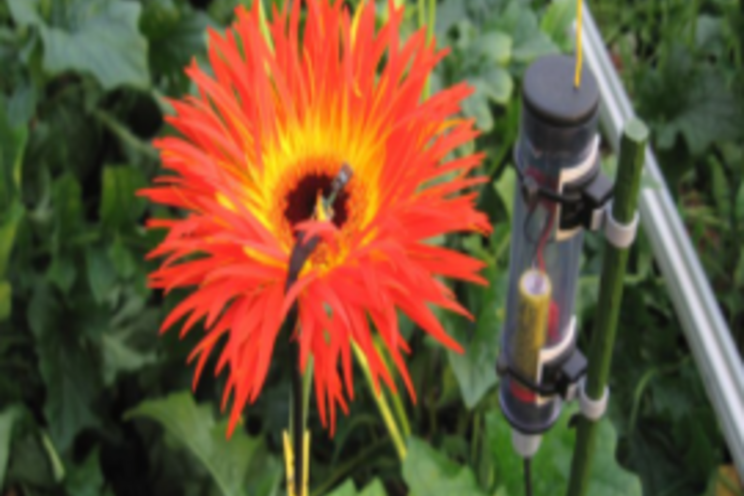What opportunities do biodegradable sensors have?
Added on 05 July 2021

Until now, sensors consist of materials that are not biodegradable. But developments are moving fast. For example, organic substances can already be used in the 'printing' of electronic parts. If a sensor is fully biodegradable, this means significant cost savings for growers and farmers: they do not have to remove the sensors after cultivation. In addition, sensors that "roll out of the printer" can also be produced in large numbers, and therefore much cheaper.
A number of parties from Germany, Spain and the Netherlands are investigating the possibilities of biodegradable sensors within the PLANtAR project. The aim of the three-year project - which started at the end of 2020 - is to stimulate developments and support producers and potential users.
Application of biodegradable sensors in greenhouse horticulture
WUR is investigating the market application in greenhouse horticulture, horticulture and arable farming and establishes design criteria for sensors in these sectors. To this end, growers and farmers are interviewed about how their business operations can possibly be improved by using biodegradable sensors. For example, can cultivation be better controlled if more data is available, or can internal processes - such as the application of crop protection - be organized better and more efficiently?
WUR's research focuses on a number of specific sensors, such as measuring moisture, conductivity and nitrate in the soil, leaf wetness, an electronic nose for fragrances and CO2 levels in the air. It is also being examined whether sensors that are only partially biodegradable are interesting for agricultural entrepreneurs. The research thus provides more insight into opportunities for biodegradable sensors, both in high-tech sectors and in low-tech or mid-tech crops.
Project partners
WUR works together with the Netherlands Plant Eco-phenotyping Center, Evalan, MuniSense, Grodan and imec the Netherlands. The project leader is the German Infineon, a world leader in semiconductor solutions. The Dutch partners are financed by the Ministry of Economic Affairs through the program of 'International Innovation', which is linked to the European Penta program (PENT191002).
Source and Photo Courtesy of AgNews
Source: Ag News
More news















